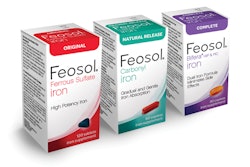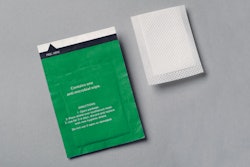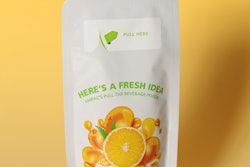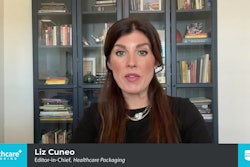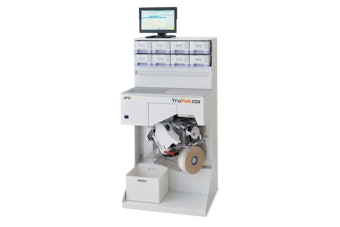Earlier this year, the company announced the construction of a 6,000 sq. ft. cleanroom for the production of sterile medical packaging pouches.
“We received overwhelming response from medical device manufacturers soon after our announcement. The interest has been so significant that we will be adding additional production capacity,” said Dwane Hahn, vice president of sales and marketing, Rollprint.
In 1978, Rollprint Chairman of the Board Robert Dodrill, designed and commercialized the foil header pouch. Thirty-four years later, Rollprint will be using its latest proprietary structures to produce pouches and bags in a wide variety of configurations in the new cleanroom. The vertical integration allows Rollprint to cost-effectively control material quality and assures best-in-class production for today's demanding medical device, pharmaceutical and life science applications.
“We started preparing for this two years ago with investments in vision systems, web cleaners and other equipment and procedures to minimize particulateqs in our film converting area. We wanted to properly address upstream criteria before taking the next step,” said Hahn.
By definition, a cleanroom environment has a controlled level of contamination that is specified by the number of particles per cubic meter at a specified size. ISO Class 8 cleanroom certification dictates the following maximum concentration limits for airborne particulate (particles/m3) according to ISO 14644-1: 3,520,000 at 0.5 μm; 832,000 at 1 μm, and 29,300 at 5 μm.
Pharmaceutical, medical device and diagnostic/life science manufacturers are constantly looking for ways to reduce the number of contaminants that come in contact with their products. This has been fueled by the heightened compliance focus of governmental agencies. Those factors are driving customer demand for domestic supply that has been produced in a cleanroom environment.
“There is a big difference between 'cleanroom environments' that some manufacturers claim they have, and actual cleanroom certification. We are pleased to be able to announce that we have met the rigorous certification criteria and are now producing pouches in our cleanroom,” Hahn explained.
The cleanroom houses five production lines capable of producing a variety of pouch structures for which Rollprint is known. This includes header bags, chevron, vented, three-side weld seals, corner peels, etc.
“Many of the packaging structures used today for pharma and medical device applications—such as film and foil header pouches, coextruded, peelable heat-seal films and silicon oxide/aluminum oxide composites—were first introduced to the industry by Rollprint. The new cleanroom capability builds on that legacy,” said Hahn.
“We received overwhelming response from medical device manufacturers soon after our announcement. The interest has been so significant that we will be adding additional production capacity,” said Dwane Hahn, vice president of sales and marketing, Rollprint.
In 1978, Rollprint Chairman of the Board Robert Dodrill, designed and commercialized the foil header pouch. Thirty-four years later, Rollprint will be using its latest proprietary structures to produce pouches and bags in a wide variety of configurations in the new cleanroom. The vertical integration allows Rollprint to cost-effectively control material quality and assures best-in-class production for today's demanding medical device, pharmaceutical and life science applications.
“We started preparing for this two years ago with investments in vision systems, web cleaners and other equipment and procedures to minimize particulateqs in our film converting area. We wanted to properly address upstream criteria before taking the next step,” said Hahn.
By definition, a cleanroom environment has a controlled level of contamination that is specified by the number of particles per cubic meter at a specified size. ISO Class 8 cleanroom certification dictates the following maximum concentration limits for airborne particulate (particles/m3) according to ISO 14644-1: 3,520,000 at 0.5 μm; 832,000 at 1 μm, and 29,300 at 5 μm.
Pharmaceutical, medical device and diagnostic/life science manufacturers are constantly looking for ways to reduce the number of contaminants that come in contact with their products. This has been fueled by the heightened compliance focus of governmental agencies. Those factors are driving customer demand for domestic supply that has been produced in a cleanroom environment.
“There is a big difference between 'cleanroom environments' that some manufacturers claim they have, and actual cleanroom certification. We are pleased to be able to announce that we have met the rigorous certification criteria and are now producing pouches in our cleanroom,” Hahn explained.
The cleanroom houses five production lines capable of producing a variety of pouch structures for which Rollprint is known. This includes header bags, chevron, vented, three-side weld seals, corner peels, etc.
“Many of the packaging structures used today for pharma and medical device applications—such as film and foil header pouches, coextruded, peelable heat-seal films and silicon oxide/aluminum oxide composites—were first introduced to the industry by Rollprint. The new cleanroom capability builds on that legacy,” said Hahn.
Companies in this press-release



